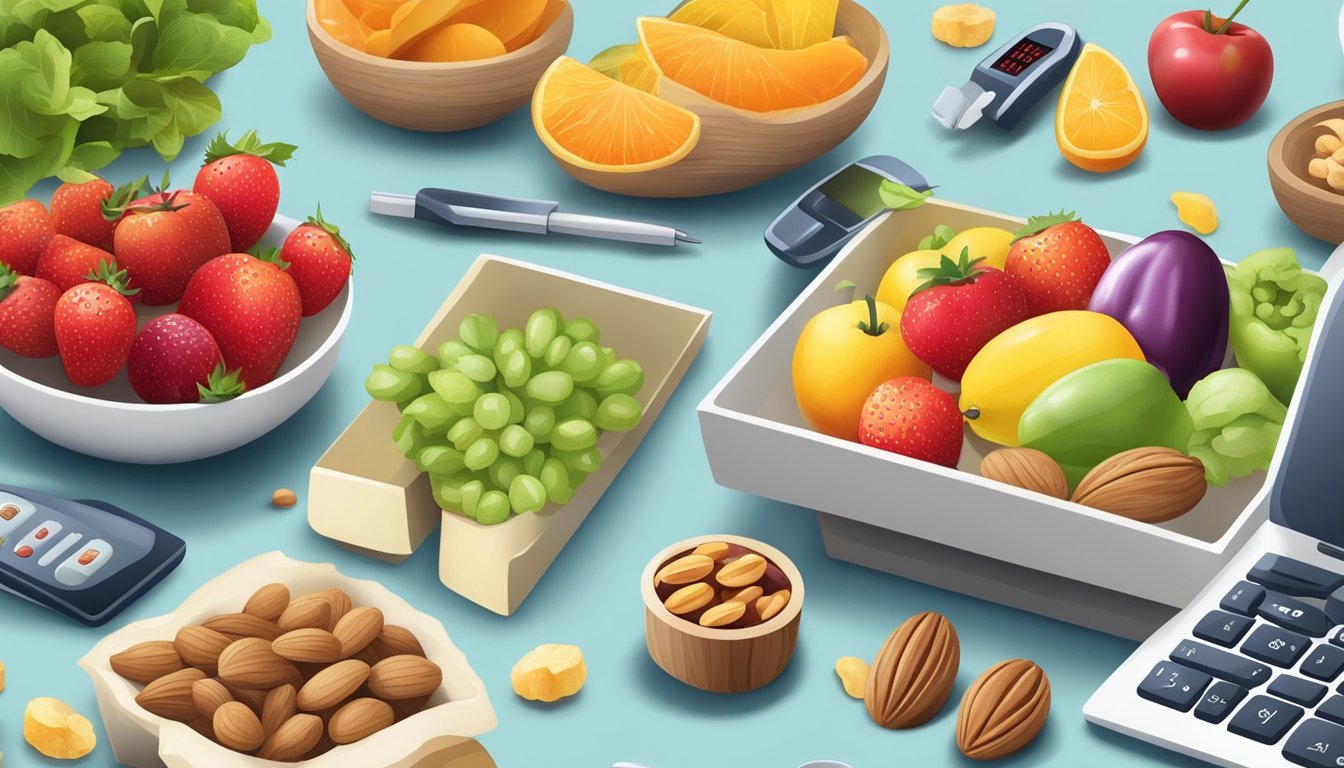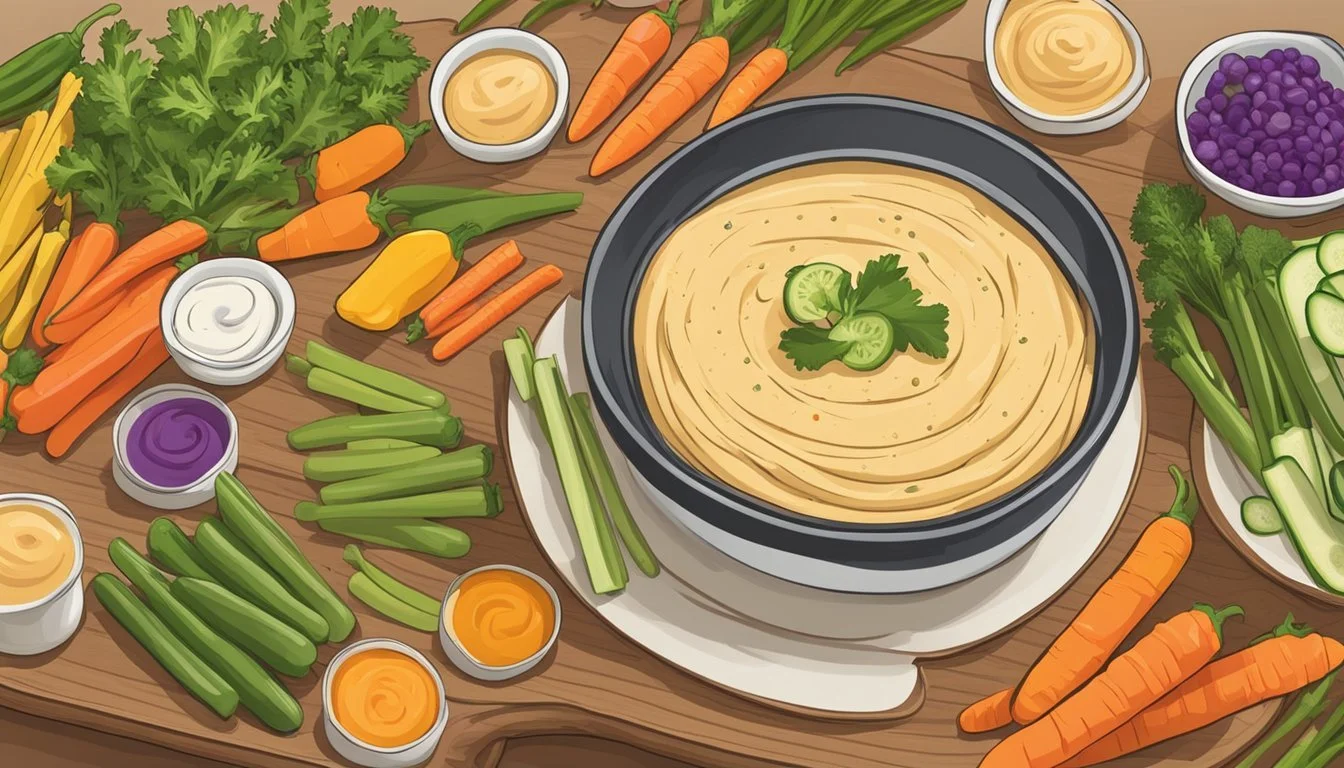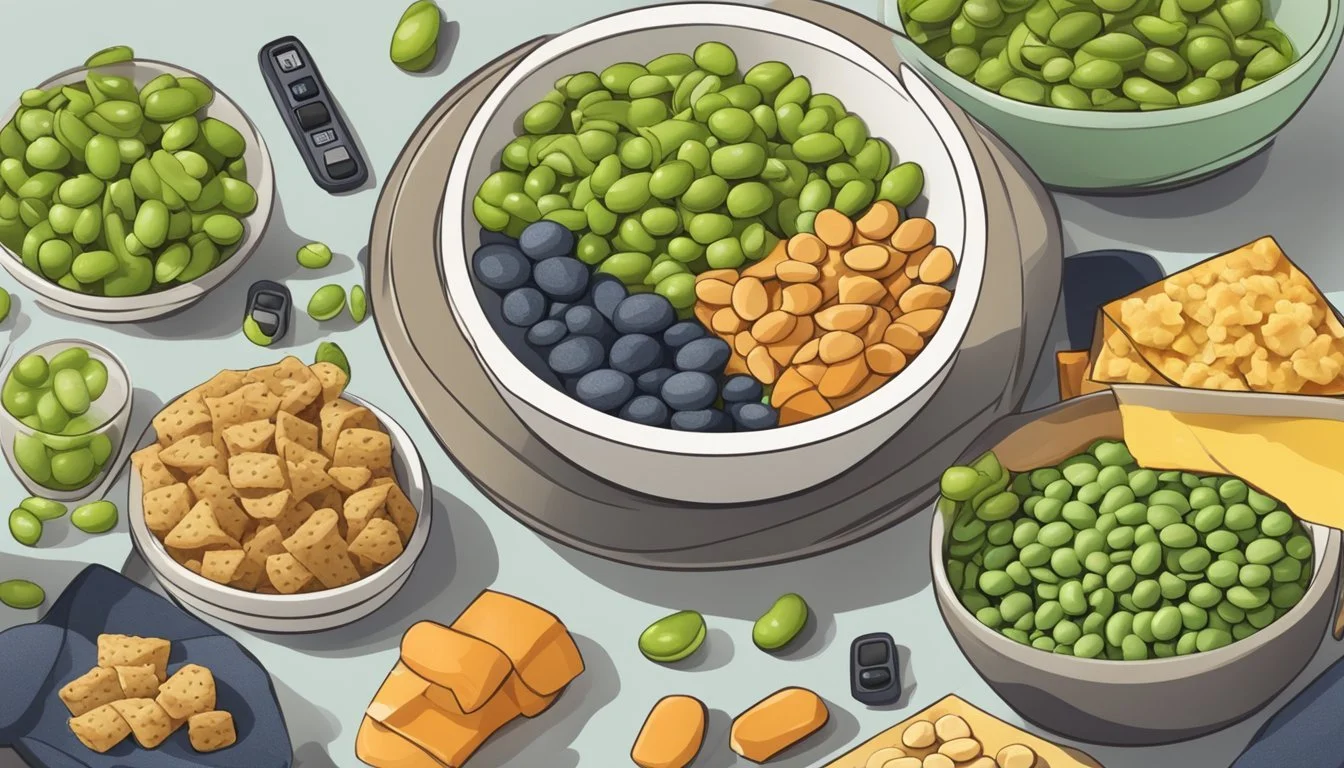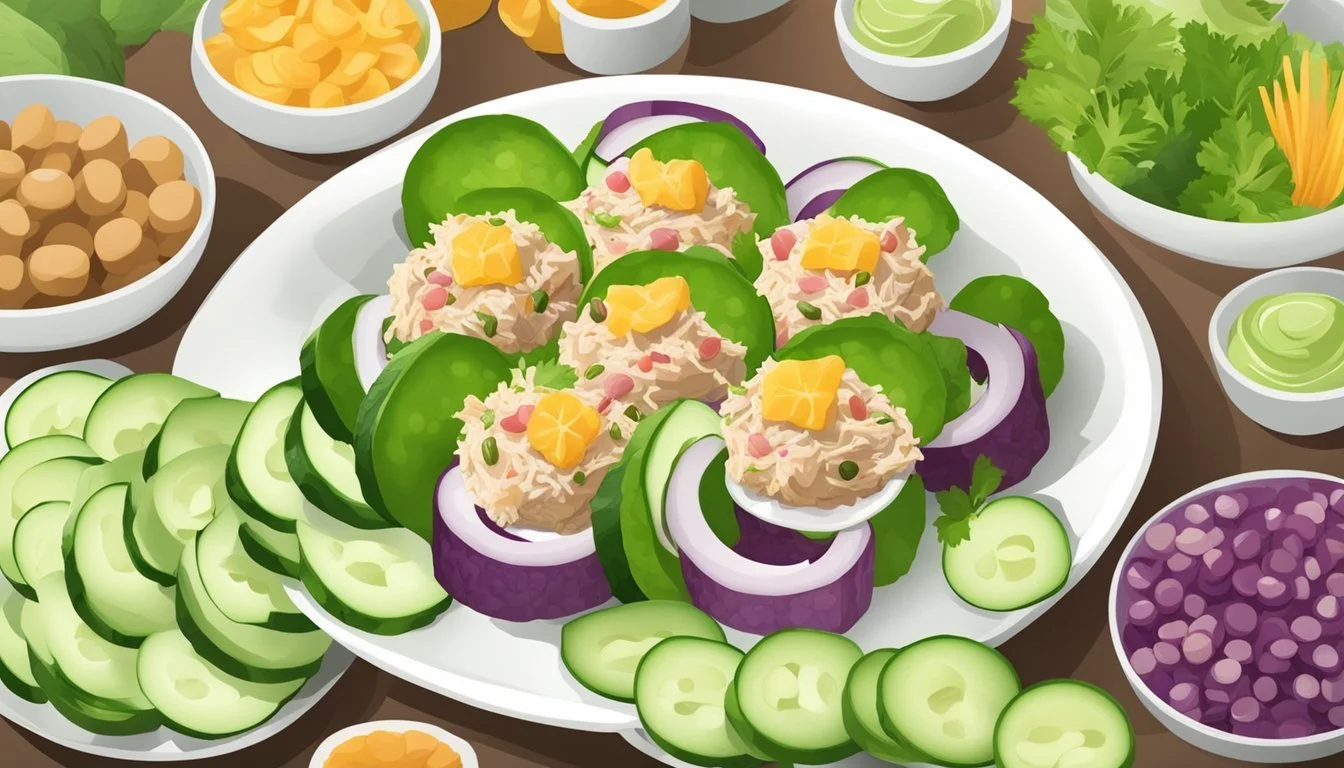9 Nutritious Snacks to Help Manage Blood Sugar Levels
Expert Choices for Better Control
Maintaining balanced blood sugar levels is crucial for individuals with diabetes, as well as for those looking to sustain overall health. Snacks can play a significant role in managing these levels, offering a necessary energy boost between meals without disrupting blood sugar stability.
This article explores nine nutritious snack options that effectively support blood sugar management, providing practical choices that are easy to integrate into daily routines. By selecting the right kinds of snacks, anyone can help maintain their health and avoid the common pitfalls associated with blood sugar fluctuations.
1) Greek Yogurt with Berries
Greek yogurt with berries is an excellent snack for those aiming to manage blood sugar levels. Greek yogurt offers a high-protein, low-carb option, making it beneficial for blood sugar control. The protein helps to slow digestion, leading to a more gradual release of glucose into the bloodstream.
Adding berries such as blueberries, strawberries, or raspberries enhances the snack with essential vitamins and antioxidants. Berries are low in sugar compared to many other fruits and have a low glycemic index. This means they cause a slower, lower rise in blood glucose levels.
The combination of Greek yogurt and berries creates a balanced snack. It provides a good mix of protein, healthy fats, and fiber without causing significant spikes in blood sugar. It's also a versatile snack that can be tailored to individual tastes and preferences.
This snack is not only nutritious but also easy to prepare. Simply mix a serving of Greek yogurt with a handful of berries, and it's ready to eat. For added flavor, a sprinkle of chia seeds or a drizzle of honey can be included.
2) Apple Slices with Peanut Butter
Apple slices with peanut butter are an excellent snack for managing blood sugar levels. The combination provides a mix of fiber, healthy fats, and protein, making it a balanced choice.
Apples are rich in fiber, particularly when eaten with the skin on. This fiber helps slow the absorption of sugar, preventing spikes in blood glucose levels.
Peanut butter adds protein and healthy fats without additional sugar. A typical serving of two tablespoons contains around 8 grams of protein and 16 grams of fat. It's essential to choose natural peanut butter without added sugars or hydrogenated fats.
This snack is not only nutritious but also convenient and easy to prepare. It's an ideal choice for anyone seeking a quick, satisfying, and blood sugar-friendly option.
3) Almonds and Dark Chocolate
Almonds and dark chocolate make for a tasty and nutritious snack combination. Almonds are packed with healthy fats, fiber, and protein. These nutrients work together to help regulate blood sugar levels and keep you feeling full longer.
Dark chocolate contains flavonols that may help lower blood sugar levels. It also offers antioxidants that support overall health. When choosing dark chocolate, opt for versions with at least 70% cocoa to maximize health benefits.
Combining almonds with dark chocolate provides a satisfying mix of flavors and textures. The healthy fats in almonds complement the antioxidants in dark chocolate, creating a balanced snack ideal for managing blood sugar. A small handful is often enough to enjoy the benefits without overindulging.
Including this snack in your diet can provide both immediate and long-term health benefits. It's a delicious way to support heart health and blood sugar management.
4) Hummus with Veggie Sticks
Hummus with veggie sticks offers a nutritious and convenient snack option for those managing blood sugar levels. This combination pairs fiber-rich vegetables with protein-packed hummus, making it both satisfying and healthy.
Veggie sticks like carrots, celery, and bell peppers are low in calories and high in vitamins. They provide essential nutrients without spiking blood sugar levels. These vegetables complement the creamy texture and flavor of hummus.
Hummus, made from chickpeas, is rich in protein and healthy fats. It has a balanced carbohydrate content, which helps prevent rapid spikes in blood sugar. A typical serving size is about one-third of a cup.
This snack not only delivers important nutrients but also supports digestive health. Chickpeas contain fiber and probiotics that promote a healthy gut microbiome. Combining this with the fiber from veggies makes it a gut-friendly choice.
Eating hummus with veggie sticks can be a versatile snack. It can easily be incorporated into various dietary plans and is simple to prepare. This makes it an excellent option for individuals looking to manage their blood sugar levels effectively.
5) Cottage Cheese with Pineapple
Cottage cheese is an excellent snack option for people managing their blood sugar levels. It is low in carbohydrates and high in protein, which can help maintain stable blood sugar.
Paired with pineapple, it creates a tasty and nutritious combination. While pineapple contains natural sugars that may affect blood sugar if eaten in large quantities, consuming it in moderation can be beneficial.
Pineapple also offers anti-inflammatory properties. When combined with the protein-rich cottage cheese, it can create a balanced snack that provides essential nutrients without causing significant blood sugar spikes.
A serving suggestion might include a quarter-cup of cottage cheese with a few pineapple chunks. This portioning helps manage the sugar intake from the pineapple while still allowing enjoyment of its flavor and benefits.
This simple and delicious snack can fit easily into a diabetic-friendly diet, providing both sustenance and taste. It is both easy to prepare and pack for a quick, nutritious option on busy days.
6) Whole Grain Crackers with Avocado
Whole grain crackers paired with avocado make for a nutritious and delicious snack that helps manage blood sugar levels.
The fiber in whole grain crackers aids in slowing the digestion process, preventing blood sugar spikes. These crackers provide a steady release of energy, making them an excellent choice for individuals managing diabetes.
Avocado adds healthy fats, which also help in stabilizing blood sugar. The monounsaturated fats in avocado improve heart health and enhance the absorption of fat-soluble vitamins.
Together, whole grain crackers and avocado create a balanced snack rich in nutrients without compromising taste. Sprinkle a pinch of salt or chili flakes on top for added flavor without adding sugar.
7) Edamame
Edamame, young soybeans often served in their pods, can be an excellent snack choice for managing blood sugar. They're rich in protein and fiber, which help stabilize glucose levels. This makes them particularly beneficial for individuals with diabetes.
Each serving of edamame is also low in carbohydrates, reducing the risk of blood sugar spikes. The high protein content further supports muscle maintenance and overall health.
Additionally, edamame provides essential vitamins and minerals, such as folate, vitamin K, and iron. These nutrients contribute to various bodily functions, including blood clotting, cell growth, and oxygen transport.
Incorporating edamame into a diet can also support heart health. The fiber content in edamame aids in managing cholesterol levels, promoting good cardiovascular function.
Moreover, edamame contains significant amounts of potassium, a mineral known to counteract sodium and help maintain healthy blood pressure levels. This balance is crucial for those at risk of hypertension.
Given their nutritional profile, edamame can be a smart, satisfying snack choice for anyone looking to manage blood sugar levels effectively. Whether steamed or as part of a dish, they offer both flavor and health benefits.
8) Celery Sticks with Cream Cheese
Celery sticks with cream cheese offer a delightful combination of crunch and creaminess. This snack is low in carbohydrates, making it a wise choice for people managing diabetes.
Celery is rich in dietary fiber and water, while also being low in calories. It provides essential vitamins such as vitamin K and vitamin C.
Choosing reduced-fat cream cheese can help keep calorie and fat content in check. A two-tablespoon serving pairs well with several celery sticks, providing a satisfying snack without spiking blood sugar levels.
This combination is not only nutritious but also easy to prepare. The simplicity of celery sticks and cream cheese makes it a convenient option for busy schedules.
9) Tuna Salad on Cucumber Rounds
Tuna salad on cucumber rounds offers a refreshing and nutritious snack. The crisp cucumber serves as a perfect base for the creamy tuna mixture, creating a satisfying combination.
This snack is low in carbs and high in protein, making it an excellent choice for managing blood sugar levels. Pairing tuna with cucumber adds hydration and fiber without adding calories.
Making tuna salad on cucumber rounds is simple. Scoop out a bit of the center from cucumber slices and fill them with a mixture of tuna, Greek yogurt, mustard, and spices.
Consider adding diced celery or onion for extra crunch. This snack not only tastes good but also supports a balanced diet.
The Impact of Nutrition on Blood Sugar
The type of food consumed can significantly influence blood sugar levels. By understanding how different foods interact with the body, individuals can make informed choices to manage their blood sugar better.
How Different Foods Affect Blood Sugar Levels
Foods impact blood sugar levels to varying degrees. High-glycemic foods, such as white bread and sugary snacks, cause rapid spikes in blood glucose. These sharp increases can stress the body's insulin response.
On the other hand, low-glycemic foods, like vegetables and whole grains, release glucose more slowly. This gradual release helps maintain steadier blood sugar levels and reduces the risk of sudden spikes. Incorporating more low-glycemic foods into the diet can be beneficial for blood sugar management.
Certain foods, like broccoli, contain compounds such as sulforaphane that may contribute to stabilizing blood sugar levels. Including a variety of nutrient-dense options can promote overall metabolic health.
The Role of Carbohydrates in Blood Sugar Management
Carbohydrates have a direct influence on blood sugar levels. Simple carbohydrates, found in foods like candies and sodas, are quickly digested and absorbed, leading to rapid blood sugar spikes. These spikes are often followed by quick drops, causing fluctuations that can be harmful over time.
Complex carbohydrates, present in whole grains, legumes, and vegetables, are broken down more slowly by the body. This slow digestion process results in a more gradual rise in blood sugar, which can be easier to manage for people with diabetes.
The quantity and type of carbohydrates consumed are crucial. Monitoring portion sizes and opting for high-fiber, low-glycemic index foods can aid in maintaining balanced blood sugar levels. Tables or lists can help track and plan carbohydrate intake effectively, ensuring better control over blood glucose.
Incorporating Nutritious Snacks Into Your Diet
To effectively manage blood sugar levels, it's essential to incorporate snacks that balance macronutrients and are consumed at appropriate times throughout the day. This approach helps maintain steady glucose levels and supports overall health.
Balancing Macronutrients
Balancing macronutrients is vital for maintaining stable blood sugar levels. Protein, fats, and fiber should be included in each snack to slow down glucose absorption and prevent spikes.
Protein sources like hard-boiled eggs or Greek yogurt are excellent choices as they have minimal impact on blood sugar.
Healthy fats, such as those found in nuts or avocados, can also contribute to satiety and slower digestion.
Fiber-rich foods like steel-cut oats or vegetables help regulate blood sugar by slowing the absorption of carbohydrates.
Combining these elements ensures that snacks are nutritious and keeps blood sugar levels steady.
Timing Your Snacks
When you consume snacks can influence blood sugar control. Eating snacks at regular intervals, such as mid-morning and mid-afternoon, can prevent large fluctuations in glucose levels.
For those managing diabetes, it is often recommended to eat smaller, more frequent meals and snacks throughout the day. This helps avoid both high and low blood sugar episodes.
Choosing low glycemic index snacks, such as a small serving of cottage cheese or a handful of almonds, during each of these intervals can provide a steady release of energy, aiding in optimal blood sugar management.
Tips for Choosing Blood Sugar-Friendly Snacks
Selecting the right snacks can help manage blood sugar levels effectively. It's essential to pay attention to food labels and avoid added sugars to make healthier choices.
Reading Food Labels
Reading food labels is crucial for anyone managing blood sugar levels. Labels provide vital information about the nutrient content of a snack.
Pay attention to the serving size listed on the package. The nutrients listed are usually per serving, so be aware of how much you consume.
Check the total carbohydrates, including sugars and fiber. Fiber helps slow the absorption of sugar, which is beneficial for blood sugar control.
Look at the protein content. Protein can help stabilize blood sugar and keep you feeling full longer.
Avoiding Added Sugars
Avoiding added sugars is essential for blood sugar management. Added sugars can cause blood sugar spikes and contribute to weight gain.
Read ingredients lists carefully. Ingredients like sucrose, high-fructose corn syrup, and cane syrup are added sugars to avoid.
Opt for snacks that are naturally sweet, like fruits, but in controlled portions.
Check for sugar-free or low-sugar options. Many snacks on the market now cater to those looking to reduce their sugar intake without sacrificing taste.
By focusing on these tips, making smart snack choices becomes easier and more effective for managing blood sugar levels.







